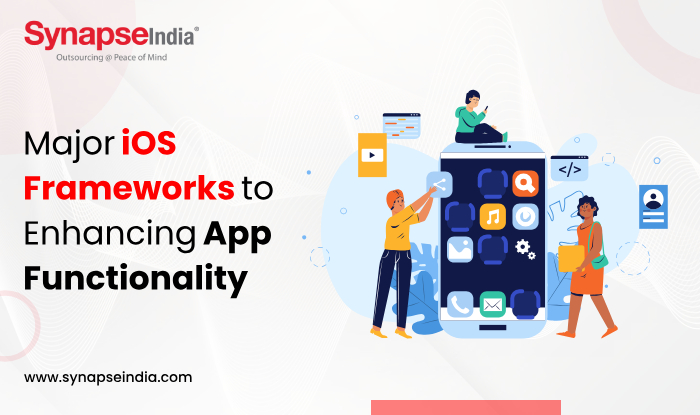 14 Feb 2024
14 Feb 2024“Frameworks make it easier to build powerful apps by providing a structure for adding user commands. In iOS, there are several important frameworks that improve app functionality.”

iOS frameworks are essential building blocks for developing robust and feature-rich applications for Apple devices, including iPhones, iPads, and Macs. These frameworks provide developers with a comprehensive set of tools, libraries, and APIs that streamline the app development process and enable the creation of high-quality, performant, and user-friendly iOS applications.
With a wide range of iOS frameworks available, developers can leverage powerful capabilities such as user interface design, data management, multimedia processing, networking, and security. Whether building native iOS apps or hybrid applications using frameworks like React Native or Flutter, iOS developers have access to a rich ecosystem of tools and resources to bring their app ideas to life.
From UIKit for building intuitive user interfaces to CoreData for managing app data and SwiftUI for declarative UI design, iOS frameworks empower developers to create immersive and engaging experiences that delight users and drive business success in the competitive app market.

Some of the major iOS frameworks used by developers include:
UIKit is a foundational framework for building user interfaces in iOS applications. It provides essential components like views, view controllers, and user interface controls for creating visually appealing and interactive interfaces.
CoreData is a powerful framework for managing the model layer of iOS applications. It provides an object-oriented interface for working with data and enables developers to store, retrieve, and manipulate data in a persistent store.
SwiftUI is a modern framework for building user interfaces declaratively using Swift code. It simplifies the process of UI development by allowing developers to describe the layout and behavior of their interfaces concisely and intuitively.
The foundation is a fundamental framework that provides essential classes and utilities for iOS app development. It includes classes for working with data types, managing files and directories, handling networking operations, and more.
AVFoundation is a framework for working with audio and video media in iOS applications. It provides classes and APIs for capturing, playing, editing, and processing audio and video content.
CoreLocation is a framework for accessing location-related information on iOS devices. It provides classes and APIs for determining the device's current location, monitoring location changes, and performing geocoding and reverse geocoding operations.
Alamofire is a popular networking framework for making HTTP requests in iOS applications. It simplifies the process of working with network requests and provides features like request chaining, response serialization, and authentication support.
These frameworks, along with many others provided by Apple and third-party developers, enable iOS developers to build sophisticated and feature-rich applications for the Apple ecosystem.

Choosing the right iOS framework to enhance the functionality of an app requires careful consideration of various factors including the app's requirements, the developer's skillset, compatibility with existing codebase, and long-term maintainability. Here's a systematic approach to help you make the right choice:
Clearly define the functionality you want to add to your app. Identify specific features or capabilities that need to be implemented or improved.
Create prototypes or proofs-of-concept using the selected frameworks to evaluate their suitability for your app. Experiment with different frameworks to compare their ease of use, flexibility, and performance.
Anticipate future scalability requirements and the potential impact on maintenance and updates. Choose frameworks that align with your app's long-term goals and roadmap.
Consult with experienced iOS developers or industry experts to get recommendations and insights based on their expertise and experience.
Based on your research, evaluation, and considerations, choose the iOS framework that best meets your app's requirements, development constraints, and long-term objectives.
By following these steps, you can effectively choose the right iOS framework to enhance the functionality of your app and ensure a successful development process.
Choosing the right iOS frameworks to enhance app functionality is a crucial decision that can significantly impact the success of an app development project. By evaluating various factors such as documentation, support, compatibility, performance, and long-term maintenance, developers can make informed choices that align with their app's requirements and objectives. Ultimately, by carefully considering the strengths, weaknesses, and suitability of major iOS frameworks, developers can effectively enhance app functionality, streamline development efforts, and deliver compelling experiences to users on the iOS platform.


